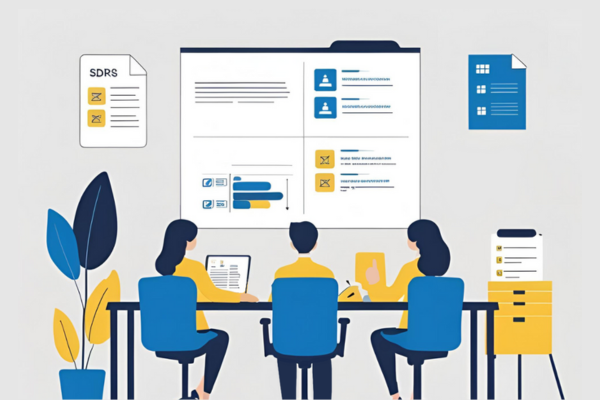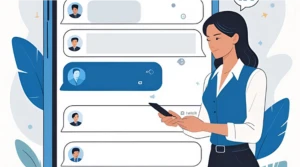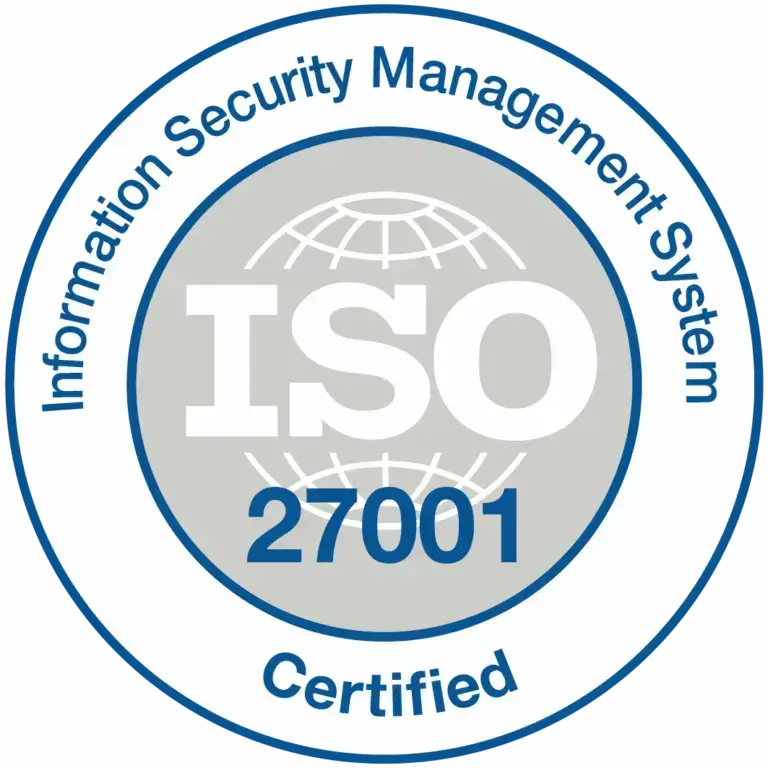From solo effort to team engine: How to build an SDR team that scales
Ramya
on
August 2025


Great outbound sales doesn’t start with tools or templates – it starts with people. In Part 1 of this series, we explored how hiring SDRs and defining your Ideal Customer Profile (ICP) lay the groundwork for a predictable B2B pipeline. But to scale your outbound strategy, you need more than a strong foundation – you need the right team and tight alignment.
In this post, we break down what makes a top-performing SDR (hint: it’s not just experience) and how to build a high-impact SDR team by focusing on attitude, communication, and cross-functional alignment. From smarter SDR recruitment to sales and marketing collaboration, this is where pipeline growth becomes truly scalable.
How to hire SDRs for attitude and communication skills (not just experience)
Great SDRs are made, not born – hire for attitude, train for skill. This mantra set the tone we discussed SDR recruitment strategy with David Feinberg – founder of The Growth Factory and former VP of Global Sales Development at Eftsure – in our recent From Cold to Closed webinar. The takeaway: when building your team, prioritise hustle, coachability, and communication skills over industry experience. Why? Because the SDR role is unique – it requires resilience, curiosity, and an ability to connect with strangers. Those traits aren’t always obvious from a fancy resume, yet they determine success more than any prior sales job.
Why soft skills matter more than sales experience
In the webinar, David recounted how some of his top SDR hires came from non-traditional backgrounds (teachers, athletes, even a former chef!) but all shared a growth mindset and grit. They were willing to cold-call 100 people a day, learn from each “no”, and bounce back with enthusiasm. On the flip side, he’s seen hires with slick tech sales resumes flame out because they lacked that inner drive.
The lesson is clear: when interviewing SDR candidates, dig for soft skills and attitude.
- Does the candidate show passion?
- Are they a good listener and communicator?
- Can they handle rejection with grace and keep going?
Those are the signals of an SDR who will flourish after training.
Practical tips for interviewing SDR candidates
Practical hiring tips: Instead of obsessing over “1-2 years SaaS experience,” consider role-playing exercises or situational questions in interviews. For example, ask how they’d respond if a prospect hangs up on them – do they demonstrate resilience and problem-solving? You can teach a new rep your product and messaging, but you can’t teach hunger or empathy as easily. David suggested looking for people who have succeeded in tough, people-facing roles (hospitality, fundraising, etc.) as they often have natural hustle and communication chops.
Once on board, train them rigorously – remember, SDRs are made. With solid coaching, even a rookie with the right attitude can become a top performer. In fact, focusing on attitude upfront pays off in retention and results: a positive, determined SDR will soak up training and continuously improve, whereas a “been-there-done-that” rep might be set in their (possibly bad) habits. By hiring smart for mindset and people-skills, you’ll build a team of SDR superstars in the making who elevate your pipeline.
Consider two hiring scenarios. Company X hires “Sales Bro Steve” – he’s got a pedigree with big logos on his CV, but he’s also a bit arrogant and expects leads to fall in his lap. Company Y hires “Gritty Gabby” – she’s a recent grad who put herself through college working night shifts, and in the interview her enthusiasm and coachability shined. Fast forward three months: Steve is struggling, unwilling to cold call in volume and clashing with the team. Gabby, meanwhile, is humble, asks tons of questions, and implements feedback daily. She’s already hitting her meeting targets. This tale (a composite of real stories David has seen) underscores that the right people make all the difference. Hire SDRs who have heart and hustle, and you’ll have a squad that not only produces, but also uplifts the whole sales floor culture.
Want to track how your SDRs are really performing? From call connect rates to meeting held rates, measuring the right SDR metrics is essential for coaching, accountability and pipeline accuracy. We break it all down in our guide to key SDR performance metrics that actually move the needle.
B2B pipeline generation is a team sport: Align SDRs, marketing and sales
Treat pipeline generation as a team sport, not a solo race.</span data-contrast=”auto”> Another major insight from the webinar was that an SDR team performs best when it’s tightly aligned with Marketing and Sales. Yes, SDRs are on the front lines of outbound, but their effectiveness multiplies when marketing is providing air cover and sales is coordinating on follow-up. Think of it like a relay: Marketing sparks interest and awareness, SDRs engage and qualify, Sales closes the deal – if one leg fumbles or runs alone, you won’t win the race. David’s advice: foster a “one team” mentality among these functions. This means shared goals (e.g. pipeline targets everyone owns), open communication, and collaborative planning of campaigns. In practical terms, your Marketing team should be feeding SDRs warm leads or relevant content to use, and your Account Executives should treat SDRs as partners, not just lead factories. When a company achieves this alignment, the GTM engine truly runs in high gear – prospects get a consistent, well-timed experience from the first ad they see, to the cold call, to the demo and beyond.
Hard benefits of alignment: The numbers back it up – companies with strong sales and marketing alignment see 19% faster revenue growth and 15% higher profitability on average. Why such a boost? Because alignment fixes common breakdowns. For example, Marketing’s definition of a “qualified lead” matches Sales’ expectations, so SDRs aren’t passing duds (a misalignment that 62% of teams suffer). And when SDRs give feedback on messaging (“prospects keep asking about X feature”), Marketing can tweak campaigns on the fly.
In the webinar, Paul (Firmable’s co-founder) noted how at Firmable the SDR and marketing teams meet weekly to swap insights – SDRs share which pain points resonate on calls, and Marketing shares which content or channels are drawing interest. This tight loop means better lead quality and higher conversion rates. In fact, firms that unify their prospecting efforts can be 67% better at closing deals than those with siloed teams. It’s truly a team sport: when everyone knows the playbook (your ICP, your value prop) and assists each other, the pipeline scores keep coming.
Example: Running one integrated play
Imagine your Marketing team plans a webinar on “Top 5 Trends in [Your Industry]” for next month. Instead of marketing doing it in a vacuum, they involve the SDR and sales teams early. Marketing shares the attendee signup list with SDRs in advance so they can personally invite high-priority prospects. SDRs start reaching out to those target accounts saying, “I thought you might be interested in this event.” Prospects see the invite ad, then a friendly LinkedIn message from the SDR – the touchpoints reinforce each other. Now, after the webinar, Marketing passes the engagement data (who attended, asked questions, downloaded the ebook) to both SDRs and AEs. The SDRs immediately follow up with attendees, referencing the webinar content (“I loved that question you asked about scaling SDR teams – our solution actually helps with that.”). Since these prospects just interacted with your brand, the SDR outreach isn’t ice-cold; it’s warm and contextual. The result?
A surge in meaningful conversations and qualified meetings, because marketing and SDR ran the play together. Sales then closes the loop by having context from both the webinar and the SDR’s notes, allowing them to tailor the demo. This is the power of an integrated GTM approach – everyone contributes to pipeline success, and wins are truly team wins.
In the webinar, David joked that in misaligned organisations, Marketing and Sales sometimes feel like rival sports teams – Marketing scores a lead and celebrates, Sales sees the lead as underqualified and groans, SDRs are stuck in the middle. The fix is making them one team. He shared a story of a company that literally broke physical silos by seating marketing, SDR, and sales together in the office. The cultural shift was immediate: casual hallway chats replaced formal hand-offs, and empathy grew. Marketing folks would hear SDRs on calls and adjust messaging; SDRs would pop over to ask product marketers for talk-track tips; AEs would high-five SDRs when deals closed that started from their cold call. Morale went up and so did pipeline.
The key takeaway? Align your teams with common goals and constant communication. When SDRs, Marketing, and Sales operate from a shared GTM strategy, your outbound engine fires on all cylinders – no more broken telephone or blame games, just consistent pipeline growth fuelled by teamwork.
Final thoughts
Hiring rockstar humans and fostering rock-solid alignment are two sides of the same coin: both are essential to build an SDR engine that really delivers. The right SDR hires – those with hustle and heart – will thrive in a culture where marketing and sales have their back. And a truly aligned revenue team ensures that your GTM message lands with prospects at the right time, in the right way, whether via an ad, an email, or a phone call.
As David summed up: “Pipeline generation works best when everyone owns a piece of it.” In our final installment, Part 3, we’ll explore how to scale your SDR team from a few reps to a few dozen without losing effectiveness, and how to support that growth with a culture of resilience and an integrated outreach strategy. Get ready to learn how to keep the engine humming as it grows!
FAQs on hiring SDR teams for pipeline growth
When hiring SDRs (Sales Development Representatives), prioritise attitude, communication skills and resilience over past sales experience. Look for candidates who are curious, coachable and comfortable with rejection – soft skills that often outperform a polished resume.
Yes. Some of the most successful SDRs come from non-traditional backgrounds like hospitality, education, or fundraising. These roles develop grit, empathy and the ability to connect with people – all essential traits for high-performing SDRs in outbound sales.
Strong alignment between Sales, Marketing and SDR teams leads to better lead quality, higher conversion rates, and more consistent pipeline. Teams that collaborate on messaging, targeting, and follow-up can see up to 19% faster revenue growth and 15% higher profitability.
Establish shared goals, open communication, and feedback loops between SDRs and Marketing. For example, Marketing can share campaign data or content insights, while SDRs provide real-world feedback on which messaging resonates with prospects.
To scale successfully, document your outreach playbook, invest in onboarding and coaching, and maintain a strong team culture. Structure your growth in phases and align everyone around a shared go-to-market strategy to keep performance consistent.
Additional resources


Don't forget to share this post!
You may also like
Discover how to build a predictable B2B sales pipeline by investing in Sales Development Representatives (SDRs) and defining your Ideal Customer Profile (ICP).
AI adoption is accelerating across ANZ – especially in B2B sales. Learn how Australian and New Zealand businesses are using sales intelligence to scale outbound, boost productivity, and stay competitive.
Traditional intent data tools often fall short in providing timely and precise insights. Discover how Firmable’s AI-driven signals are setting a new standard in B2B intent data, offering timely, actionable intelligence tailored for the Australian and New Zealand markets.
Grow your business faster with Firmable data
With the largest Australian and New Zealand B2B database and the only local support team, it’s easy to get started with Firmable.



